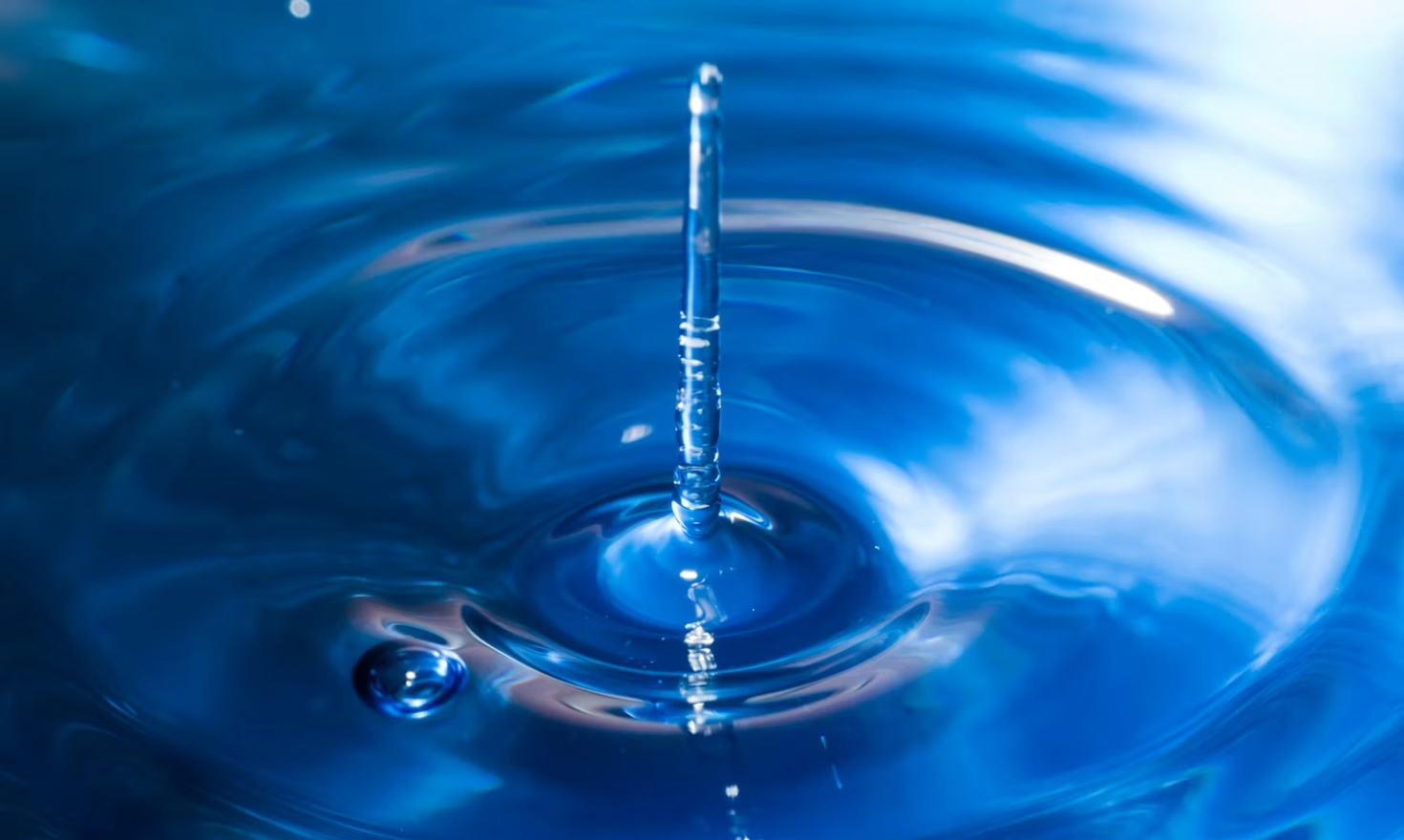Sustainability
Ultrasound Tech Supercharges Atmospheric Water Harvesting
Securities.io maintains rigorous editorial standards and may receive compensation from reviewed links. We are not a registered investment adviser and this is not investment advice. Please view our affiliate disclosure.

TL;DR
MIT’s ultrasound device can extract water from humid air up to 45× more efficiently than heat-based systems, cutting cycles from hours to minutes. If scaled with renewables, it could enable practical off-grid clean water generation in arid and remote regions.
Clean Water From Thin Air: Atmospheric Water Harvesting Basics
In many regions of the world, fresh water comes at a premium. One option for access could be desalination, but so far, this is a very energy-intensive approach, even if some progress in solar tech has recently made it closer to reality.
Seawater desalination is also not an option for many inland arid regions, such as, for example, central Asia, Mongolia, the Chilean mountains, or most of the Sahara Desert.
Another option is to capture the water present in the air. Many deserts actually have rather high atmospheric moisture, but for climatic reasons, they do not form rain and clouds.
This is the promise of atmospheric water harvesting. We previously covered how passive cooling mixed with a silicon coating could boost the efficiency of gravity-based water harvesting and how new adsorption polymers could help as well.
Researchers are now looking at further improvement on atmospheric humidity harvesting, getting us closer to the science fiction water harvesting “windtrap” of the Dune universe.
An MIT team, in collaboration with the German company SmarAct Metrology GmbH & Co. KG, has used ultrasound to boost the efficiency of atmospheric water adsorption. They published their results in Nature Communications1, under the title “High-efficiency atmospheric water harvesting enabled by ultrasonic extraction”.
Atmospheric Water Adsorption Explained
A method for harvesting water from the air is to use a polymer that “adsorbs” water.
Adsorption is the capacity of solid substances, called “sorbent”, to attract molecules of gases or solutions with which they are in contact with their surfaces – in this case, gaseous water vapors and droplets of water suspended in the air.
In everyday life, we know adsorbent materials like silica gel in commercial packaging. This is actually a relatively efficient process, and it can collect a lot of ambient water.

Source: Osaka Metropolitan University
The issue is making the polymer release that water. Usually, a heat of around 100°C is required to desorb these polymers, which, of course, makes it very energy-inefficient and costly.
“Any material that’s very good at capturing water doesn’t want to part with that water. So you need to put a lot of energy and precious hours into pulling water out of the material.”
Even lower temperature with newer polymers has the problem that the water release using heat is a slow process, taking tens of minutes or hours. As a result, most water adsorption systems need to capture the water at night and release it during the day with the heat from the Sun.
In contrast, using ultrasounds could shrink the water harvesting time to just a few minutes and could be done on demand.
Ultrasounds’ Potential
Ultrasound, or ultrasonic waves, are acoustic pressure waves that travel at frequencies of over 20 kilohertz (20,000 cycles per second). They are increasingly used for advanced applications, like bioprinting and powering remote medical devices.
It appears that ultrasound vibrates at just the right frequency to cause the separation of the water molecules and the material that absorbed it.

Source: Nature Communications
The researchers designed a flat ceramic ring made of lead zirconate titanate (PZT), which vibrates when voltage is applied.
“It’s like the water is dancing with the waves, and this targeted disturbance creates momentum that releases the water molecules, and we can see them shake out in droplets.”
To adsorb the water, they used several types of PAM-LiCl AWH hydrogels varying in elasticity, which all incorporated lithium and chloride ions to catch the water from the air.

Source: Nature Communications
When put to the test, the device was able to shake out enough water to dry out each sample in just a few minutes.
Inspection of the hydrogels with an electron microscope also proved that the ultrasound did not damage the gel, making this device durable enough for practical use.

Source: Nature Communications
Massive Efficiency Improvement
Because until now the heat-driven water release was only happening once, the efficiency of the process was very low, with even the state-of-the-art device at just 9.5% efficiency.
In contrast, the MIT system can produce water repeatedly during the day, leading to efficiency as high as 428%, or a 45-fold increase in efficiency.
It’s all about how much water you can extract per day,” she says. “With ultrasound, we can recover water quickly, and cycle again and again. That can add up to a lot per day.”
So while the device wasted a little energy in heat (Joule effect), it is still massively more efficient than all other water harvesting methods developed so far.
Swipe to scroll →
| Method | Energy Source | Cycle Speed | Efficiency (%) |
|---|---|---|---|
| Traditional Heat-Based AWH | Solar Heat | Hours per cycle | ~9.5% |
| MIT Ultrasonic Extraction | Electric (solar/wind) | 2 minutes per cycle | ~428% |
“People have been looking for ways to harvest water from the atmosphere, which could be a big source of water, particularly for desert regions and places where there is not even saltwater to desalinate.
Now we have a way to recover water quickly and efficiently.”
Real-Life Deployment in Arid and Remote Regions
At first, the best possible application of this device will be for remote desert areas with limited access to both energy and freshwater infrastructure.
Contrary to heat-based adsorption, this device will, however, need electric power to make the ultrasounds, so decentralized energy production will be needed, either with:
- Solar panels like those in MIT’s experiments.
- With wind, which could work at night, when moisture is even higher, allowing for more of the 2-minute water harvesting cycles per hour.
- With renewable energy generation + battery systems to run 24/7.
When testing what the ideal cycle frequency is, the researchers found that the ideal rhythm is to let the material absorb water for 1 hour, then use ultrasound to release it in 2 minutes, and repeat the cycle.
More importantly, the energy required to extract the water with ultrasounds stayed constant, instead of seeing a slow decline as with heat-based methods.

Source: Nature Communications
Future Improvements in Atmospheric Water Harvesting
Next-Generation Sorbent Materials
This method used lithium hydrogels, but many other sorbent materials exist: other hydrogels, metal-organic frameworks, micro- and nano-fiber mats, and combinations of these materials.
Each will need to be re-evaluated and re-engineered to enhance its compatibility with the alternative extraction method.
The degradation resistance of these other sorbents will also need to be evaluated.
Improving Ultrasound Efficiency
Considering NASA performed tests on PZT actuators, for up to 100 billion cycles over 580 days and revealed no discernible damage or substantial performance decline, the ultrasound-generating part of the device is expected to be highly durable.
However, the design used in this experiment is relatively inefficient in turning power into ultrasound, with just 17 to 19% efficiency.
A 1-3 composite piezoelectric transducer array device, instead of a single ring-shaped actuator, could reach as high as 35% efficiency instead.
Larger PZT-based ultrasound could also be a lot more efficient than the small experimental device tested here. So overall, 1,000% efficiency or more could be in reach when calibrating and improving the PZT material used.
Toward Water Generating Towers?
Another important improvement is that ultrasonic extraction does not require exposing the sorbent surface to sunlight. So the devices can be stacked vertically on top of each other with no limitation in principle to the number of vertical rows.
Instead of a large-scale field to absorb the sunlight, large towers that flow water from each stacked device could be built for more centralized designs.
Companies Solving Water Shortages
Xylem Inc.
Xylem Inc. (XYL +0.66%)
Together with the European Veolia, Xylem is a global leader in water purification, wastewater treatment, and desalination. It employs 23,000+ people (of which 6,000+ are engineers) and operates in 150 countries, with a focus on the USA, with 35,000+ direct industrial customers.
Its main market is municipal drinking and wastewater, but it also provides water-related dedicated solutions to other sectors like healthcare, power, food & beverages, oil & gas, microelectronics, etc.

Source: Xylem
Xylem can provide the critical patented pieces of equipment to clean or produce water, like ozone generators, UV lamps, desalination membranes, ultra-pure water generators, etc.
But it also provides “simpler” equipment equally critical to water-related operations like turbines, pumps, piping, injection, software, etc., as well as maintenance, repair, and installation services, making it a one-stop shop for most water applications.

Source: Xylem
The water market is still a very fragmented one, with Xylem one of the largest companies in the sector, but still holding “only” a 10% market share out of its $80B served addressable market.
The company spends around 4% of its sales on R&D. It should benefit from new regulations regarding PFAS (Per- and polyfluoroalkyl substances, or forever chemicals), with 6,000+ utility facilities needing such PFAS treatment.
Xylem has been growing steadily, with net income growing from $297M in 2012 to $609M in 2023 while keeping a stable 17-19% EBITDA margin.
Overall, this makes the company’s investing profile less like that of an industrial company (often cyclical) and more like that of a utility company growing with the overall economy or a little bit above that rate, like most of its consumers.
Latest Xylem (XYL) Stock News and Developments
Launching World's First Commercial Subsea Desalination Plant, Flocean adds Xylem as Strategic Investor and Extends Series A Funding
Xylem Inc. Declares Fourth Quarter Dividend of 40 Cents per Share
Buy 5 Business Services Sector Stocks to Boost Your Portfolio Stability
Xylem: Federal Legislation Fuels Xylem's Multi-Year Growth Potential
Xylem Inc. $XYL Shares Sold by Bessemer Group Inc.
Xylem: Solid Fundamentals Going Into FY2026
Study Referenced
1. Shuvo, I.I., Díaz-Marín, C.D., Christen, M. et al. High-efficiency atmospheric water harvesting enabled by ultrasonic extraction. Nature Communications 16, 9947 (2025). https://doi.org/10.1038/s41467-025-65586-2














